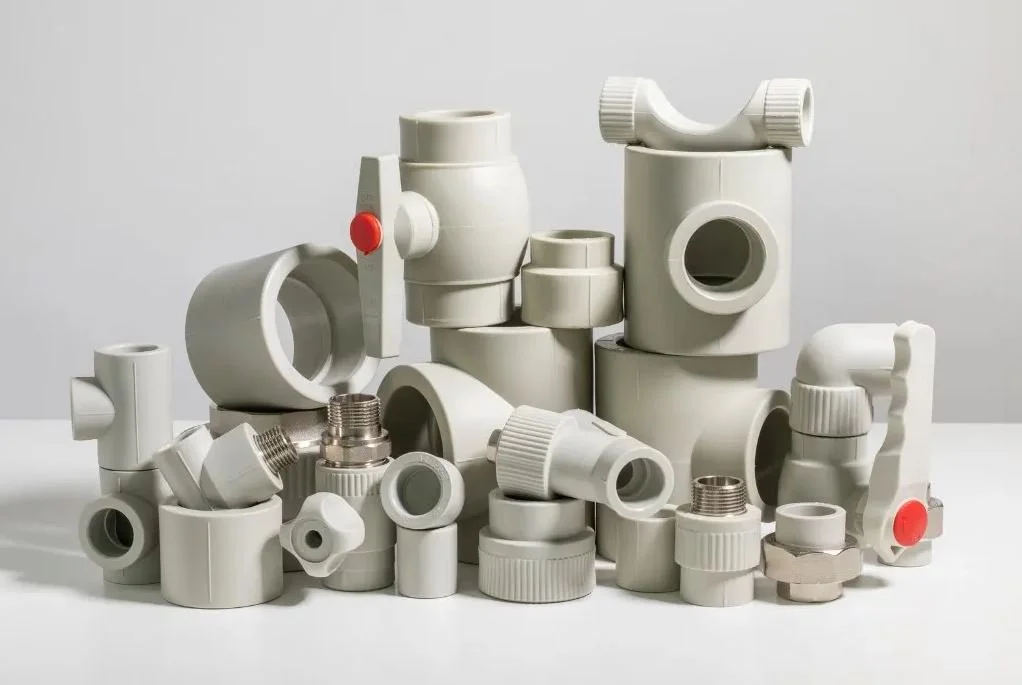Fittings For PVC Pipes: Types, Features, And The Right Choice
When starting to repair or install plumbing, many people only think about pipes. In fact, fittings are just as important—they are the small parts that hold the system together. They determine whether water will flow smoothly, whether there will be leaks, and how long your system will last. If you are looking for PVC pipes accessories, see it here – Pireys offers a wide range of options for any project.
Fittings allow you to change the direction of pipes, connect different diameters, branch the system, or simply close the ends of pipes. Without them, installing PVC pipes would be difficult, and sometimes impossible.
Why fittings are so important
The real power of fittings is that they make the system reliable. PVC pipes themselves are lightweight and durable, but without the right fittings, even the highest quality pipe can leak. For example, when changing the direction of a pipeline or connecting a tee, the wrong fitting can be a source of problems.
There are different types of fittings: straight couplings, reduction couplings, elbows, tees, plugs, and compression elements. They all have their own characteristics and purposes. It is important not just to buy any fitting, but to choose the right one for your project and pipe diameter.
How to choose fittings
When choosing fittings, several important points should be considered:
Material – fittings must be made of the same material as the pipe to avoid leaks and chemical incompatibility.
Diameter – even a small difference can cause leaks.
Purpose – cold water, hot water, sewage, or drainage systems have their own requirements.
Connection method – glued or compression fittings, depending on whether quick replacement or a removable design is required.
Following these rules will help you install the system without any problems and ensure its durability.
Installation tips
If you are doing the repair yourself, be sure to check that the fittings match the pipe diameter exactly and are certified. Use the correct adhesive and be careful not to mix different materials without special adapters – this will help avoid leaks and system failures.
It is also worth planning the entire system in advance to avoid unnecessary bends and cuts that complicate installation. If you encounter difficult areas, it is better to consult a professional right away – even a short consultation will save you time, money, and nerves.
The ideal plan is when you have a project created by a plumber or engineer. It will already take into account all the necessary connections, their type, quantity, and the place on the plan where they should be used. This can significantly save money and time, because a high-quality connection protects against pressure drops, leaks, and damage to the final repair.
Key benefits and tips
To summarize everything you need to know about fittings for PVC pipes, here is a single list that combines all types, features, and rules for the right choice. However, we still strongly advise you not to rely solely on yourself if you have no experience. Consult with a professional about the project – it is the plumbing design that takes into account the required number and type of fittings.
Fittings for PVC pipes – advantages and rules of use:
Allow you to change the direction of the pipeline and create branches;
Ensure the tightness and reliability of the entire system;
Suitable for pipes of different diameters thanks to reduction couplings;
Used to close pipe ends with plugs or caps;
Easy to install with glue or compression fittings without special tools;
Compatible with pipe material (PVC) and resistant to chemical influences and temperature changes;
Suitable for cold and hot water systems, sewage and drainage;
Durable and provide stable operation for many years;
Easy repair and maintenance without dismantling the entire system;
The right choice of fittings helps to avoid leaks and expensive repairs in the future.
Fittings for PVC pipes are the invisible heroes of any plumbing system. They make installation reliable, durable, and simple. Choosing the right fittings, diameter, material, and operating conditions ensures that your system will serve you for many years without leaks or problems.
When repairing or replacing pipes, choose certified fittings from the same manufacturer, plan the system in advance, and don't be afraid to consult with professionals. This will help make the repair quick, safe, and stress-free.

